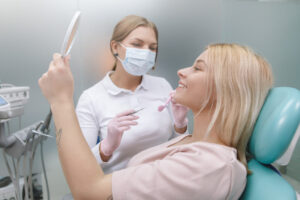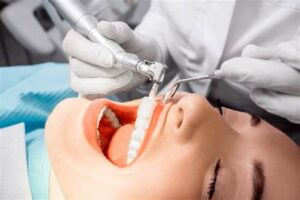Most people who wear Invisalign are told one simple rule: take your aligners out before eating. So when someone hears, “My dentist told me to eat with Invisalign,” it can be confusing. That advice goes against what most patients have read online or heard during their treatment.
So what’s the truth? Is it ever okay to eat with your aligners in? Or does that advice cause more harm than good?
This article breaks it down in a way that’s easy to understand. We’ll go over what the official Invisalign guidelines say, why some dentists—or even an orthodontist in Clark NJ—may give different advice, and what can actually happen if you do eat with them on. You’ll also learn what foods could cause problems, what to avoid, and how this choice might affect your results.
If you’ve been wondering what to do, you’re not alone—and this guide can help clear things up without the confusion.
What Invisalign Manufacturers Recommend
If you’re wearing Invisalign, the first thing you’ll hear from most providers is this: always remove your aligners before eating or drinking anything besides water. This isn’t just a random rule — it’s the official guideline from Align Technology, the company that makes Invisalign.
According to them, aligners are made from a special type of plastic designed to gently move your teeth. They’re not built to handle the pressure of chewing. Eating with them in can bend or crack the trays, which may stop them from fitting right or working the way they should.
Food and drinks can also stain or damage the plastic. Trapped bits of food and sugars can stick to the inside of the aligner, making it easier for bacteria to build up. That means more risk for cavities and gum problems.
So when someone says, “My dentist told me to eat with Invisalign,” it’s important to know that this goes against what the makers of Invisalign actually recommend. While some advice may vary, the company’s position is clear: always remove your aligners before meals to keep your treatment on track and your mouth clean.
Why Some Dentists Say You Can Eat with Invisalign
Hearing “My dentist told me to eat with Invisalign” might sound strange, but it’s something a few people have heard — and sometimes even from a dentist in Clark NJ or another trusted provider. So why the mixed advice?
Some dentists may say it’s okay for patients to eat very soft foods with aligners in to avoid the hassle of taking them out. This can help with patient compliance, especially if someone forgets to put them back in after meals. In rare cases, the suggestion is more about keeping the aligners in for the full 22 hours a day than about safety.
Still, this advice is usually based more on convenience than strong clinical evidence. While it might seem harmless, small choices like this can add up and affect treatment in the long run. It’s always best to ask your orthodontist if something doesn’t match what you’ve heard elsewhere.
What Happens If You Eat with Aligners On?
Eating with Invisalign might seem harmless at first, but it can cause real problems for both your aligners and your teeth.
First, the aligners aren’t made to handle chewing. They’re designed to gently guide your teeth—not take the pressure of biting into food. Chewing while wearing them can lead to cracks or warping. Once the shape changes, they may stop fitting correctly, which can slow down or mess up your treatment.
Food can also stain the trays. Even soft or light-colored foods can leave marks or smells trapped inside the plastic, which can be hard to clean. That means your aligners might start looking cloudy or yellow, even if you’re brushing your teeth.
Another issue is bacteria. When food gets stuck between the aligners and your teeth, it creates the perfect place for germs to grow. This can lead to bad breath, tooth decay, or gum problems. Even one snack with the trays in can increase the risk.
So when someone says, “My dentist told me to eat with Invisalign,” it’s worth thinking twice. Small habits like this can affect both your smile and your health in ways you might not expect.
Are There Any Foods That Are “Safe” to Eat with Invisalign?
Some people think soft foods like yogurt, bananas, or mashed potatoes are safe to eat with Invisalign in. Since these foods don’t need much chewing, it might seem like they won’t harm the trays. But even soft or gentle foods can still cause problems.
Sticky textures can pull at the plastic, while sugars and starches can get trapped under the aligners. Even something as simple as fruit can leave sugar behind, which feeds bacteria. Hidden grit in some foods—like small seeds or soft bread crust—can also scratch or damage the trays.
Warm or hot foods are another issue. Heat can slightly warp the plastic, changing how the trays fit over your teeth. This may seem minor, but it can delay your progress.
So even if a food seems harmless, most orthodontists still say to take your aligners out before eating. It’s the safest way to protect your treatment and your smile.
What About Drinking with Invisalign In?
Drinking with Invisalign is a little different from eating, but it still comes with its own risks. While water is always safe, many other drinks can cause issues.
Soda, juice, coffee, and alcohol are considered hard no’s by most orthodontists. These drinks contain sugar, acid, or dark coloring that can stain the aligners or lead to tooth decay. Hot drinks are also a problem, since heat can warp the plastic and affect the fit of your trays.
Some people take small sips with aligners in, but that doesn’t mean it’s risk-free. Even a quick coffee or sports drink can leave residue trapped under the plastic, creating a breeding ground for bacteria.
The safest option? Stick to plain, cool water. It keeps your mouth hydrated, won’t stain your aligners, and won’t harm the material. When in doubt, it’s always better to remove your trays before drinking anything besides water.
Impact on Treatment Results if You Eat with Aligners
Eating with your Invisalign trays on can do more than just stain or crack them—it can actually affect how well your treatment works. When the aligners don’t fit right due to warping or damage, your teeth may not move the way they’re supposed to.
Even small changes in fit can throw off your progress. If your trays aren’t applying the right pressure, it could slow things down or shift your teeth in the wrong direction. In some cases, your orthodontist may need to order a new set of trays or make a mid-course adjustment.
That can mean more appointments, added cost, and a longer treatment timeline overall.
If you’re unsure about the do’s and don’ts during treatment, it’s a smart idea to speak with an experienced orthodontist in Clark NJ. Getting the right advice early on can help you avoid delays and keep your smile moving in the right direction.
Tips If You Absolutely Must Eat with Aligners On
Eating with Invisalign isn’t recommended, but let’s be real, there might be times when you forget to take them out or feel stuck in a situation where removing them isn’t easy. If it happens once in a while, here’s how to reduce the risk.
First, stick to cold or room-temperature soft foods. Think plain yogurt, applesauce, or a banana. Avoid anything hot, chewy, crunchy, or sticky. These are more likely to warp the aligners or get lodged between the tray and your teeth.
Next, rinse your mouth and your trays with water right after eating. This helps remove food particles and sugar that can lead to bacteria buildup.
After rinsing, clean your aligners thoroughly with a soft toothbrush and clear, unscented soap—never toothpaste, which can be abrasive.
Still, it’s important to treat this as a rare exception—not a daily habit. Even soft foods can slowly damage the plastic or interfere with how your teeth shift over time.
If you find yourself eating with aligners on often, talk to your orthodontist about better ways to manage your schedule. A little planning can go a long way in protecting your treatment and keeping your smile on track.
Better Alternatives to Eating with Invisalign In
Instead of risking damage by eating with your aligners on, there are a few simple habits that make things easier and safer.
Start by planning your meals around the times you naturally remove your trays. If you stick to three main meals a day and limit snacking, it’s easier to keep the aligners in for the full 20–22 hours without feeling rushed or stressed.
Cutting back on random snacks also helps reduce the number of times you take the trays in and out, which can wear them down if not done carefully.
One of the best things you can do is carry your Invisalign case everywhere. It keeps your trays clean and safe when you need to take them out at school, work, or while eating out. Leaving them in a napkin or pocket often leads to broken or lost aligners—something no one wants during treatment.
Conclusion: Should You Follow Your Dentist’s Advice?
If you’ve been told it’s okay to eat with your Invisalign trays in, it’s understandable to feel unsure. When advice from your provider doesn’t match the official guidelines, it might be time to ask questions—or even get a second opinion.
There are cases where some flexibility is suggested, especially for kids or teens who struggle with remembering their trays. But even then, most professionals—including any trusted kids dentist in Clark NJ—would agree that sticking to proven habits leads to better results.
At the end of the day, taking care of your aligners is part of what makes treatment work. It’s not just about convenience—it’s about getting the smile you signed up for. Following small, consistent habits now can help you avoid setbacks later.
So before changing how you use Invisalign, make sure the advice is backed by real experience—not just what sounds easier in the moment.
Take Care of Your Invisalign the Right Way
Eating with your aligners in might sound like a small thing, but it can make a big difference in how well your treatment works. If you’ve been told something that doesn’t match the usual Invisalign advice, it’s worth double-checking with a trusted team.
At Clark Pediatric Dental & Orthodontics, we’re here to guide you through the process—clearly and confidently. Whether it’s for you or your child, we’ll make sure your Invisalign treatment stays on track from start to finish.
Contact Us
Get in touch today and receive a complimentary consultation.
(732) 815-1977
777 Raritan Road, Clark, NJ 07066
clarkpedsortho.com/contact-us
Office Hours
Mon / Tues / Thu / Fri: 9 AM – 6 PM
Weds: 2 PM – 6 PM
Summer Hours (July – Labor Day)
Mon – Thu: 9 AM – 6 PM
Fri: 9 AM – 3 PM (Selected Days)










